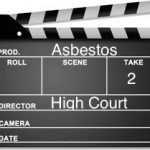Macarthy v Marks & Spencer [2014] EWHC 3183 (QB)
Case Background
Mr Heward died of mesothelioma aged 61. Mr Heward started working for this father’s company aged 16 as a trainee draughtsman and subsequently rose to the position of Managing Director in 1981 upon his father’s death. D H Allan & Sons (the third party) undertook shop fittings and were responsible for maintenance of 13 of the defendant’s stores in North-East England. Mr Heward gave evidence in his witness statement, produced before his death, that the only asbestos he had been exposed to was during work to stores operated by Marks & Spencer.
The precise circumstances of the deceased’s exposure to asbestos was unknown but the evidence highlighted two distinct periods which were ultimately relied upon. First, was a period of approximately three weeks in the summer of 1967 whilst working as a joinder in York; and second, was between 1967 and 1990 when the deceased carried out inspections of the Defendant’s stores.
The following issues required determination:
- Did the Claimant contract mesothelioma;
- was the Claimant exposed to asbestos dust during the course of his employment at the Defendant’s stores; if so:
- did that exposure cause the mesothelioma;
- what was the extent of his asbestos exposure;
- was the asbestos exposure negligent and/or in breach of the Occupiers’ Liability Act 1957. In particular did the exposure give rise to a foreseeable risk of injury having regard to the state of knowledge at the time of the exposure; and
- if the Claimant is successful, can the defendant rely upon contribution or indemnity from the third party.
Points 1-4 were answered without any undue difficulty. The judge accepted that asbestos was used ‘extensively in the defendant’s stores’, particularly as ceiling tiles which probably contained amosite but possibly also crocidolite.
The judge rejected the Claimant’s submission with regards to the Occupiers’ Liability Act 1957 and the presence of a warehouseman. In considering whether the exposure was negligent, the judge preferred the evidence of the Defendant’s expert (Mr Stelling) to that of the Claimant’s (Mr Glendenning) where they differed. Both experts agreed that the work in 1967 would not have exceeded 30 fibres/ml which was the applicable standard. Reaching his conclusions on the exposure, the judge did not believe that, assessed by the standards of the time, it was reasonably foreseeable that the Defendant should have appreciated that the presence of asbestos dust was likely to be injurious to the health of site workers (Williams v University of Birmingham [fusion_builder_container hundred_percent=”yes” overflow=”visible”][fusion_builder_row][fusion_builder_column type=”1_1″ background_position=”left top” background_color=”” border_size=”” border_color=”” border_style=”solid” spacing=”yes” background_image=”” background_repeat=”no-repeat” padding=”” margin_top=”0px” margin_bottom=”0px” class=”” id=”” animation_type=”” animation_speed=”0.3″ animation_direction=”left” hide_on_mobile=”no” center_content=”no” min_height=”none”][2011] EWCA Civ 1242 applied).
When assessing the later exposure (during the period when the deceased was a store inspector) the Claimant put particular emphasis of HSE Guidance Note EH10 of 1976. The court rejected this submission and again concluded that the exposure was not negligent. By July 1984 the risks were firmly recognised and by May 1985 the Defendant had issued a code of practice. Both experts agreed that the level of exposure during this time would not have been in excess of guidance in force at the time.
In considering the final question (albeit briefly given the conclusion on negligence), the judge rejected the submission that the Defendant was precluded from claiming against the third party because the deceased was in breach of his duty to the company. In reaching this conclusion the judge distinguished the case of Brunder v Motornet Service and Repairs [2013] 1 WLR 2783 on the basis that in Brunder the Claimant was the sole director and controlling mind.
Contributor Comments
This case had the implausibility of an exam question in combining three significant, but distinct, issues for adjudication in the same case.
First, the Deputy High Court Judge had to consider what degree of involvement in works involving asbestos in the exposure in the 1960s might give rise to liability as a joint tortfeasor, where the Defendant was the occupier of the relevant premises and the employer under the relevant building contract. The Court of Appeal in the Fairchild Occupiers’ Appeal had rejected liability on the basis solely of status as occupier, but held open the possibility of liability as a joint tortfeasor following Ferguson v Welsh. This possibility would require some degree of actual involvement at the relevant works; the extent of involvement was clearly an issue for future consideration.
In this case, the Claimant sought to argue that the presence of a warehouseman who had some remit for health and safety was sufficient. The Deputy High Court Judge considered this to be too limited a remit and, in practical terms, the responsibility of the warehouseman did not go beyond basic occupier’s liability, that is for the static or physical condition of the premises. The degree of involvement required to create liability as a joint tortfeasor therefore remains unresolved.
Secondly, the Deputy High Court Judge had to consider when the appreciation of risk of asbestos exposure was such that should, in practical terms, be zero tolerance, which is the current day position. Following the decision of the Court of Appeal in Williams v The University of Birmingham, those acting for the Claimants have sought to argue that zero tolerance became mandatory when the HSE Guidance Note EH10 of 1976 indicated that asbestos exposure should be reduced to the lowest level reasonably practicable. However, the Deputy High Court Judge accepted the Defendant’s and third party’s submission that this was reading too much into too little. EH10 appears to have been a document drafted by a committee and there is a certain degree of ambiguity within it. The expression, “so far as reasonably practicable” implies a situation in which risk has been identified and the contention that risk should always be identified when there was any suggestion of asbestos exposure is not consistent with other guidance in EH10, in particular in relation to the use of respiratory protective equipment. The Deputy High Court Judge considered that prior to 1984, by which time the Defendants were taking action, a reasonable occupier or employer would not have considered exposure at the level experienced by the Deceased to be foreseeably hazardous.
Thirdly, the Deputy High Court Judge had to consider the relevance of the Deceased’s status as Managing Director of the third party and whether this, in effect, precluded a claim against the third party. The findings on this point are understandably brief as the issue did not arise directly for consideration given the Claimant’s failure to prove that the exposures were foreseeably hazardous. The Deputy High Court Judge considered the case of Brunder could be distinguished on the basis that the Claimant in Brunder was a sole Director and controlling mind, and that Brunder in any event did not concern a claim for contribution under the Civil Liability (Contribution) Act 1978. Given that the Judge’s comments are obiter and not detailed, this issue will require consideration in future cases. It is suggested that the Judge should first consider whether the Director was in breach of duty in terms of his obligation towards the company. If a finding of breach of duty is made, then it needs to be considered whether this breach would give rise to an obligation to indemnify the company, even if the Claimant or Deceased was not the sole Director. The usual basis of such tortious liability is joint and several and in these circumstances, the Claimant could not recover against the company, but would have a right against his fellow Directors. In considering whether there is a claim for contribution against the employers under the 1978 Act, it is reasonable to argue that a claim for contribution does not arise if the Claimant’s right of action against his employers is extinguished by a counterclaim for indemnity.
Charles Feeny will be speaking on the Heward case and other recent authorities on mesothelioma at DWF Solicitors, 4.30pm, 16 October in “Mesothelioma – the new generation of claims”.
CHARLES FEENY
ST JOHNS BUILDINGS
[/fusion_builder_column][/fusion_builder_row][/fusion_builder_container]



